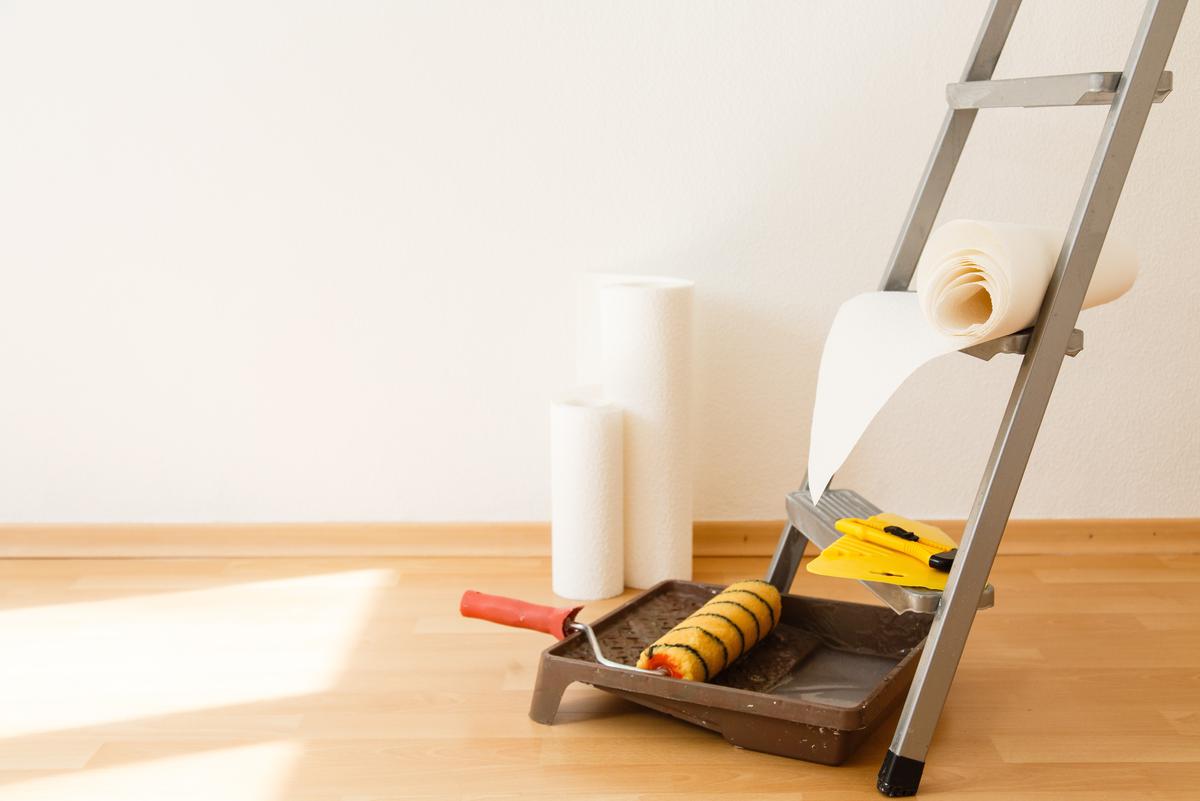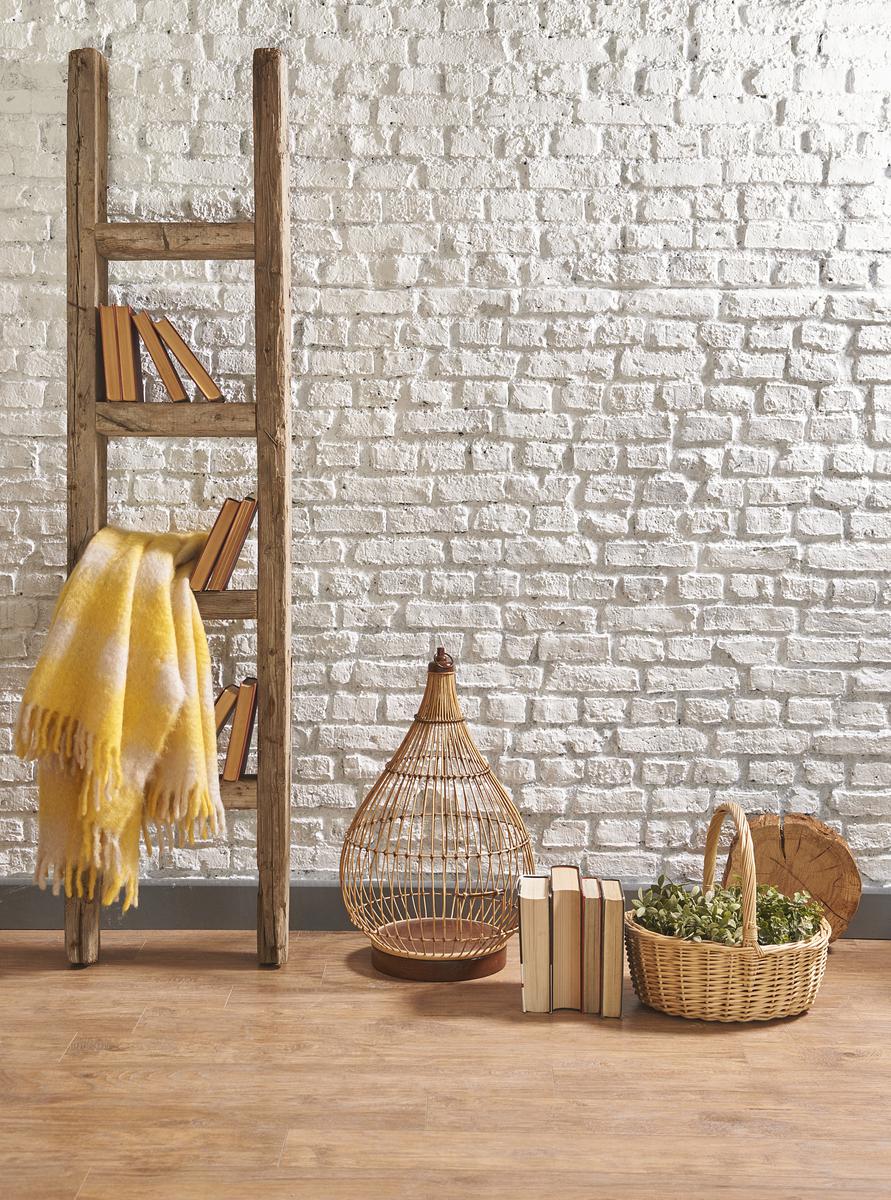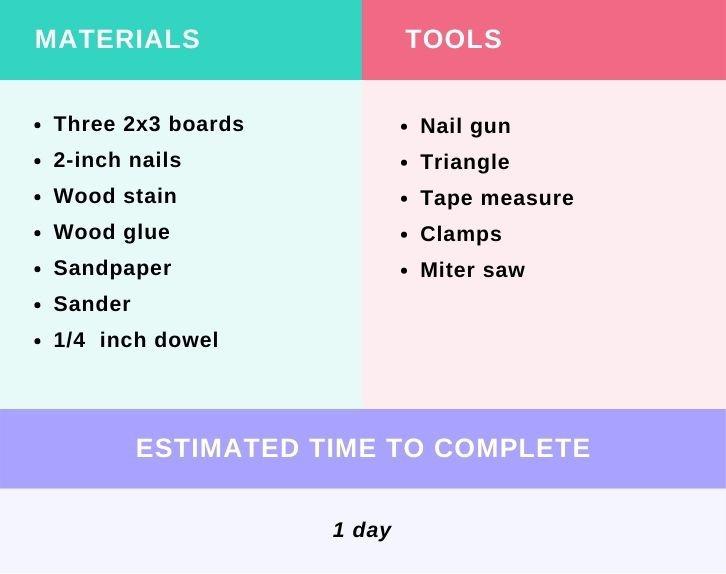3. Do Some Measuring
The next step is to determine the gap that will be between each rung. The best way to do this without resorting to a lot of maths is to eyeball it. This isn’t rocket science, so we don’t need absolute precision. To get the spacing as even as possible simply lay out the beams and put rungs in the places they would go when the blanket ladder is fully assembled.
Get them as evenly spaced as you can and then use a tape measure to fine-tune things. It’s ok if things are not perfect, as a small imprecision won’t be super noticeable, especially if you’re planning to complete an eclectic room. Once you have the rungs spaced apart as you want them, mark those points so you can start drilling.
4. Put in The Rungs
The best orientation to put the rungs in on a blanket ladder is vertical, as this makes it easier to hang blankets without having them fall off. To attach the rungs, first put some wood glue on the ends of each rung and then assemble the blanket ladder. Use the wood clamps to keep the blanket ladder from coming apart until the wood glue dries. To keep things level, use a little wood wedge from any scraps left from cutting the beams.
Once the ladder is assembled (and before the glue dries) use a nail gun to put in two to three nails on the end of each rung for additional structural reinforcement. Once the glue has dried, your blanket ladder should be quite sturdy and ready for some final touches.
5. Do Some Sanding
Wood likes to splinter, especially after it’s been cut, so be sure to sand your blanket ladder using a combination of sanders and sanding papers. This will remove any offending splinters and also help scrape away any excess wood glue, making it easier to apply the stainer. Speaking of which...
6. Bring Out The Stainer
Whether you’re going to use it outdoors or indoors, staining is a very important detail for any wooden piece of furniture. It not only improves the appearance of furniture but will also protect the wood from rot and insects. Because a wooden blanket ladder is relatively small, you don’t need fancy brushes to stain it. Instead, simply don some latex gloves and rub the stainer into the wood with a clean rag.
The stainer you choose is up to you, just keep in mind that some stainers are designed for outdoor use only, and may give off unpleasant smells if used indoors. Also, some wood stains are darker than others, so be sure to choose a stain that has the color you prefer. Aim to apply two coats of stain, and be sure to wipe away any excess with a separate rag.
All Done!
Once the stainer has dried, your blanket ladder is ready for action and should give you many trouble-free years of fancy blanket storage. Plus, if your veteran blanket ladder starts to show its age, refinishing and resurfacing will be enough to make it good as new again. And if push comes to shove, replacing one of the rungs (for rot, for instance) is a cinch.












comments